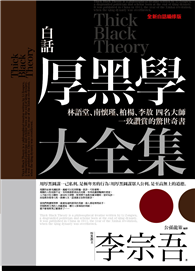When Thomas J. Ferraro declared Italian-American writing "one of the better kept literary secrets of [the twentieth] century," he had in mind Garibaldi M. Lapolla, among other authors. In their detailed and sensitive treatment of everyday life in early twentieth-century Italian Harlem, Lapolla’s three published novels - The Fire in the Flesh (1931), Miss Rollins in Love (1932), and The Grand Gennaro (1935) - form a cornerstone of early Italian-American fiction for readers familiar with the likes of Silvio Villa, Giuseppe Cautela, Louis Forgione, Frances Winwar, John Fante, Mari Tomasi, Pietro di Donato, Guido d’Agostino, and Jerre Mangione. However, Garibaldi M. Lapolla’s writing has not garnered nearly the attention it deserves despite his renown among scholars of Italian-American literature, the similarity of his fiction to that of canonical ethnic writers such as Abraham Cahan and Anzia Yezierska, and the recent entry into the canon of other Italian-American fiction writers (such as Pietro di Donato and John Fante). To be sure, one obvious reason is unavailability. While Lapolla’s novels were generally well reviewed - especially The Grand Gennaro, considered to be his best work - they soon went out of print. And despite an Arno Press resurrection of his first and last novels in 1975, Garibaldi M. Lapolla’s name continues to remain in underserved obscurity; he could very well be the best kept secret of Italian-American literature.
| FindBook |
有 1 項符合
Miss Rollins in Love的圖書 |
 |
Miss Rollins in Love 作者:Lapolla 出版社:Bordighera Press 出版日期:2016-05-30 語言:英文 規格:平裝 / 276頁 / 22.9 x 15.2 x 1.5 cm / 普通級/ 初版 |
| 圖書館借閱 |
| 國家圖書館 | 全國圖書書目資訊網 | 國立公共資訊圖書館 | 電子書服務平台 | MetaCat 跨館整合查詢 |
| 臺北市立圖書館 | 新北市立圖書館 | 基隆市公共圖書館 | 桃園市立圖書館 | 新竹縣公共圖書館 |
| 苗栗縣立圖書館 | 臺中市立圖書館 | 彰化縣公共圖書館 | 南投縣文化局 | 雲林縣公共圖書館 |
| 嘉義縣圖書館 | 臺南市立圖書館 | 高雄市立圖書館 | 屏東縣公共圖書館 | 宜蘭縣公共圖書館 |
| 花蓮縣文化局 | 臺東縣文化處 |
|
|
圖書介紹 - 資料來源:博客來 評分:
圖書名稱:Miss Rollins in Love
|











